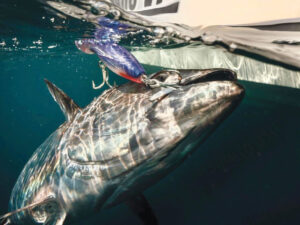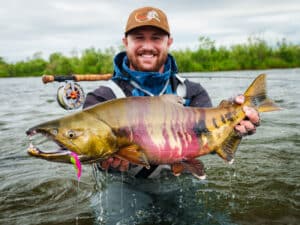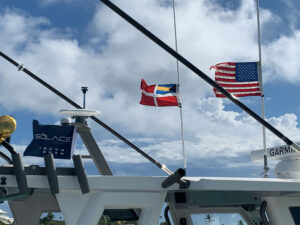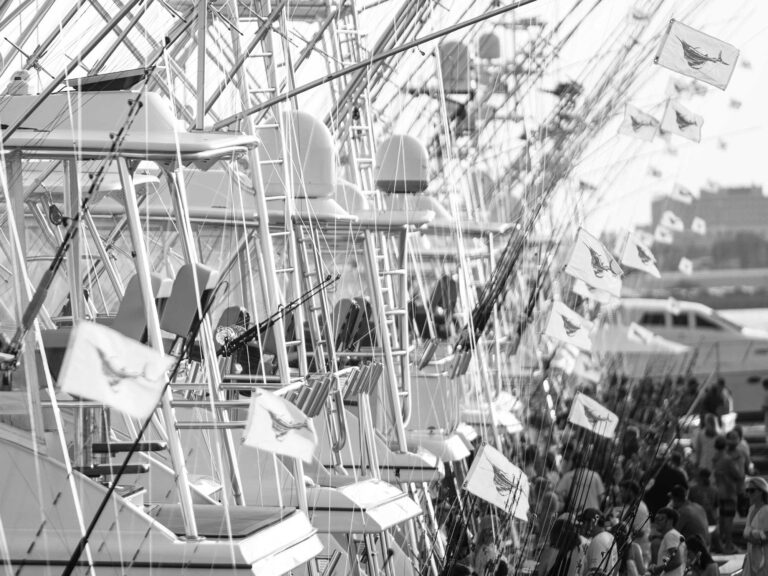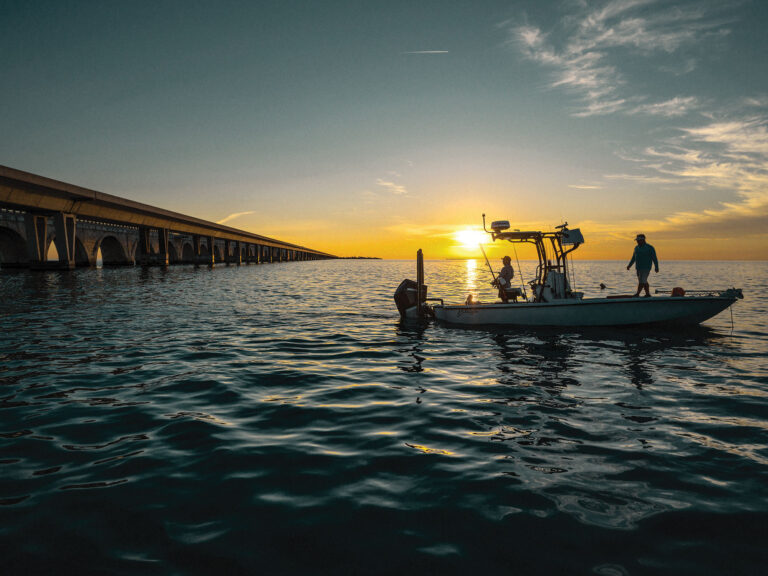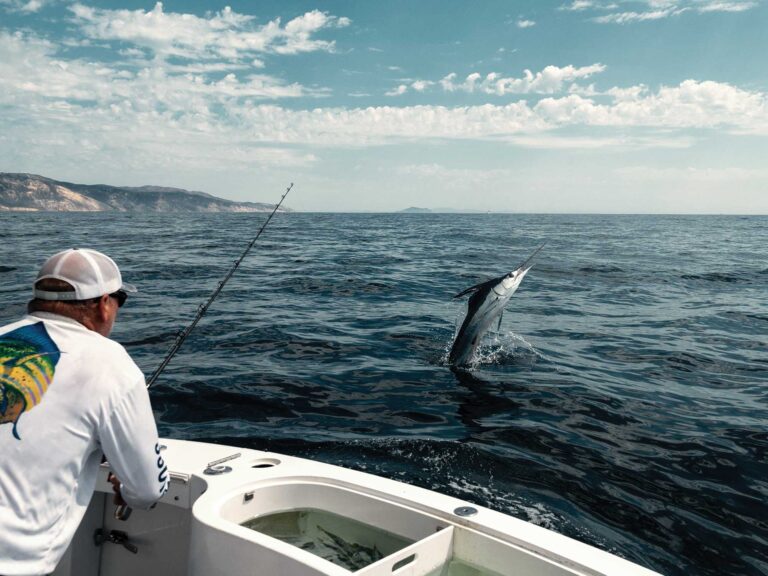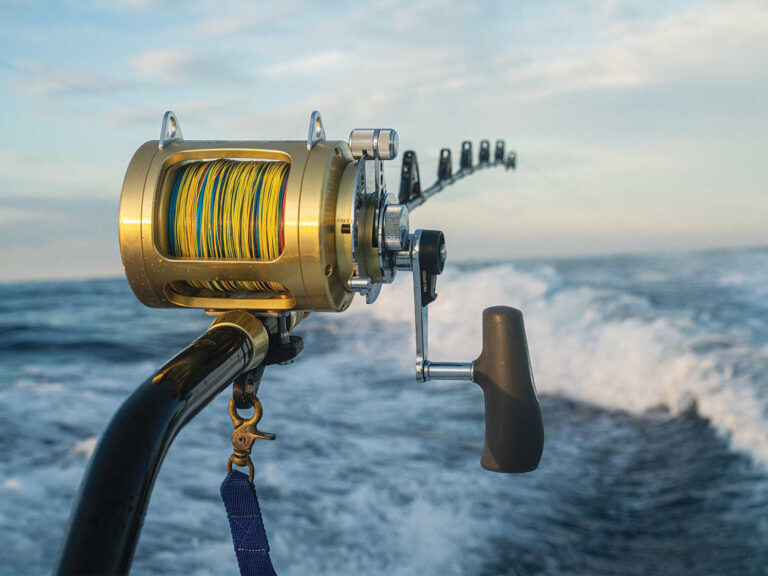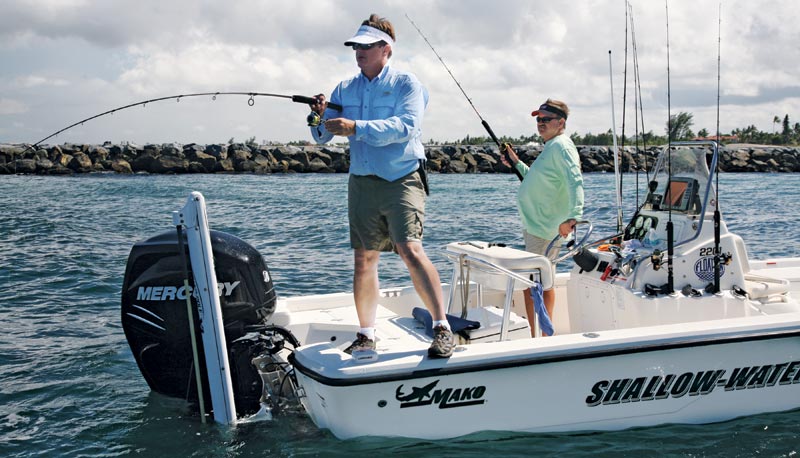
Inlets and passes are complex gateways providing the lifeblood to bays, sounds, rivers and creeks while simultaneously serving as prime fishing spots. Game fish traverse these passages and lie in wait at specific points to ambush bait. And when these inlets are used as migratory routes or are flush with baitfish runs, the inlet fishing can be downright explosive.
For the experienced angler, locating and catching fish within inlets and passes can be easy. The opposite rings true for someone who doesn’t comprehend an inlet’s makeup in terms of structure, fish staging areas, current breaks, jetty pooling, tidal lines and rips. Inlets and passes are much like people in that each has its own personality.
However, regardless of whether an inlet or pass is shallow or deep, wide or narrow, or long or short, it should reveal crucial hints as to the whereabouts of fish. Consider how the following applies to your inlet or pass, and you’ll soon be hooking into some very impressive fish.
Fishing Structure at Inlets and Passes
Each inlet or pass has a distinctive structural makeup, which deflects currents and, in turn, establishes feeding zones. Knowing the inlet’s bottom topography, as well as how its ledges, seawalls or jetties interact, provides a strong indication of game fish whereabouts during specific stages of a tide.
For example, some friends and I fished Haulover Inlet at North Miami Beach with a snook guru late one evening, a couple of hours into the outgoing tide. Rather than fish the usual bridge groins and pilings, we proceeded to the middle of the ocean-side mouth over a depression a few feet deeper than the surrounding bottom. I used the motor to hold against the tide and let my friends drop live baits. This pocket held snook — big ones! The bottom depression provided a break in the strong outgoing tide for the snook and gave them a prime ambush spot. Because the backside of this depression gradually sloped toward the open ocean (as opposed to the front side, which was an abrupt ledge), it was advantageous for snook only during a strong falling tide.
The front and back of bridge pilings and fenders are obvious fish stations. Yet equally productive and lesser known are large rocks or chunks of debris and significant bottom depressions within an inlet system. Even an inlet seawall or ledge that juts outward only a few feet can provide fish with similar relief and an ambush spot. Along jetties, a large boulder or a set of boulders or rocks that protrudes toward the inlet might provide a less pressured ambush spot where fish stage throughout a tide.
When North Carolina’s Capt. Joe Shute looks for Spanish mackerel and bluefish in Beaufort Inlet, it’s on the first two hours of the falling tide. There’s still plenty of water over the oceanside bars, another form of structure, and when the bait is sucked out of the inlet, it collects over those bars. And when that happens, the Spanish mackerel and bluefish are there in force. Inlet fishing can be like shooting fish in a barrel. But it comes down to knowing which structure and specific tide stage line up the bait and game fish.
It’s not much different from targeting redfish on the shoals. There are specific tidal stages that enable bait and redfish — and the anglers chasing them — to access certain bars and troughs. This is especially critical in areas where there are large swings of the tide.
Funnel Points at Inlets and Passes
Inlets and passes funnel water flow and constrict the bait migrations entering them. Generally, the oceanside mouth of a pass is best on an outgoing tide when inlet fishing. The inshore mouth is often better when the tide begins its inward flow, though there are always exceptions. Game fish instinctively gravitate to these funnel points, knowing a smorgasbord of forage awaits them.
On slack tides and the initial changes of the tide, fish usually scatter, searching for dispersed baitfish before the tide picks up and begins concentrating them. When the tide kicks in, look to specific structure points along these funnel zones to hold game fish dodging the force of the tide and ambushing the bait swept toward them. In Florida, and other areas of the Gulf and Atlantic coasts, some of the best bait for inlet fishing is whatever is available on site. That could be mullet, pinfish, croakers, herring, menhaden or even sardines.
Don’t overlook “dog legs” or bends along an inlet seawall or ledge or the inlet itself; water rushing against these spots can collect bait and establish similar feeding zones. For example, during cobia season, Shute has enjoyed excellent luck when fishing the back of Barden Inlet, North Carolina, where it turns and heads toward the Drain, the channel leading to Harkers Island. “There are plenty of cobia around Bardens during their run,” says Shute. “At the back of Bardens, it narrows down between two shallow bars. It concentrates the bait and the cobia. I caught a pair of 90-pound cobia there and lost one that was about 18 inches larger than those two. That fish could have gone 120 pounds.”
Tides and Tidal Features of Passes and Inlets
Capt. Allan Engel, a noted Bradenton, Florida, guide, investigates current lines. “These are the slight rips and lines paralleling the edges of the channel, jetties or seawall, which collect grass and debris,” says Engel. “They also collect bait and feeding fish. Along the outside of those lines, the current isn’t as strong as it is within the teeth of the tidal flow, so bait and fish expend less energy here. They’re great spots to drift live baits and even cast bucktails and soft-plastics.”
Tidal boundaries, or tide lines, are the leading walls or edges of water during a tide change. They’re especially productive when the murkier inshore water meets the cleaner ocean water outside an inlet or pass. Depending on the region, a huge number of species can be caught along these transitional zones. The tactic is to work the edge of that line as it leaves an inlet until you find the bait. Inlet fishing also means fishing outside the inlet when conditions cooperate. This is where game fish should be lurking. And when that edge begins to overlay major bottom structure along the way, it can be all the more productive. These tidal boundaries can be just as productive at the initial incoming stage as well, when the clean ocean water begins entering the inlet.
Backwashes or eddies on the backside of jetties often pool bait, and because of this, they’re frequented by game fish. Capt. Adam Crouthamel often targets both striped bass and blackfish in Cold Spring Inlet, in Cape May, New Jersey. “When the tide is ripping from the beach across the tip of the rocks, as it does during the flood stage, we’ll fish just inside the inlet,” says Crouthamel. “There will be a back eddy here where both striped bass and blackfish get out of the current and feed on bait holding up. We’ll drop baits into the rocks for blackfish and cast live baits and lures past the inlet and let them drift back to the eddy for the stripers. When the tide is outgoing and the rip situation reverses itself, we’ll fish on the outside of the inlet and rocks, in the calmer water and where eddying is likely.”
Following the tide when inlet fishing yields not only blackfish, striped bass and fluke, but a more diversified lineup the farther south you travel. You might find the likes of redfish, cobia, king mackerel, bluefish, Spanish mackerel, groupers, snappers, tarpon, snook, flounder and seatrout.
Scoring in and around inlets boils down to locating structure, bait and the conditions that induce feeding. Learn your inlet’s hot spots, and you’ll hook into some impressive fish — the ones that force the other boats running that inlet to slow down for a closer look!

